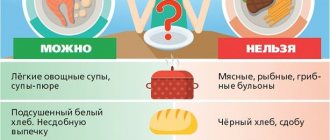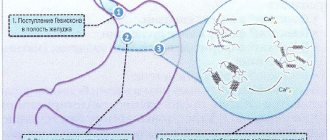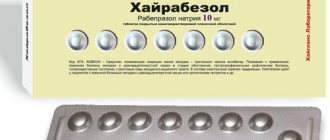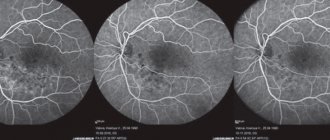Sodium alginate in the classification of food additives goes under the name E401 and is a salt of alginic acid. It is supplied for sale in the form of a powder, the color of which can vary depending on the characteristics of the raw material from cream to light brown.
The composition is highly soluble in water, which, together with its beneficial qualities for the skin, has found wide application in the cosmetic field. Experts offer people with problem skin masks based on it to restore energy balance.
The high popularity of the product is due to the fact that such preparations perfectly retain moisture, having a stabilizing and gelling effect. Technologists from the food industry also highly appreciated the mixture’s abilities and adopted it.
Properties of sodium alginate
A widely used powder is obtained from brown or red algae. They grow in abundance in the maritime parts of Indonesia and the Philippines. At the same time, production facilities for their processing are located mostly in China, Japan, France and America. Moreover, in Asian countries, the use of the concentrate is most often associated with the beauty industry, since the demand for alginate products there has remained simply incredible for the last five years.
Content:
- Properties of sodium alginate
- Use in the food industry
- To the delight of cosmetologists
- Medical research
The world has learned about the beneficial qualities of algae components for quite a long time. The history, if we omit the mention in antiquity, when plants were used by healers, goes back to the seventies of the last century. It was then that scientists tried to find a safe compound that would take on the responsibility of removing radionuclides and heavy metal salts from the tissues of internal organs.
Brown algae were taken as the basis for laboratory tests. After conducting a series of tests, the employees responsible for the experiment came to the conclusion that at that time it was hardly possible to find something more effective in counteracting the effects of radiation exposure than sodium-based alginate.
Much later, when people became interested in the chemical and energy composition of supplements, additional testing was carried out. Their reviews confirmed that the presented concentrate as a food additive does not pose a significant threat to human health.
The only warning here was following a strict daily dosage. It is not worth exceeding the calculation according to the principle: 50 mg of a substance per 1 kg of weight for reasons of personal safety.
What is sodium alginate
Sodium alginate is formed by the reaction of alginic acid with sodium salts. Alginic acid is a polysaccharide heteropolymer consisting of carboxylic acids. E401 is a polymer compound related to sugars. Contains residues of guluronic and mannuronic acids.
In nature, alginates are found in plants as storage carbohydrates. They are extracted in large quantities from red and brown algae (kelp, fucus).
Structural formula of the sodium alginate molecule (C6H7O6Na) n
The food supplement is produced in the form of a heat-stable light powder of a cream, yellowish or grayish tint. The mixture is highly hygroscopic, dissolves slowly in water, which is enhanced by heating, and exhibits a gelling, gelling effect. The powder is fibrous or consists of granules, has no pronounced odor, and is neutral in taste. Manufacturers package sodium alginate in moisture-proof polypropylene containers and then in cardboard winding drums.
Use in the food industry
Despite the fact that alginate can be purchased freely at a pharmacy for anti-aging procedures, it is used in the food industry on a much larger scale.
The most important mission assigned to the mixture is considered to be the function of a thickener, which was made possible thanks to the gel-forming structure. You can find mention of E401 on the labels of the following products:
- canned mushrooms;
- canned vegetables;
- processed cheese;
- sauces;
- canned meat;
- sweets like ice cream or multi-ingredient desserts;
- bakery products.
Sometimes even a standard recipe for making cheese at home cannot do without this natural additive.
Also, with the help of E401, technologists clarify juices or make soft drinks cloudy. It is unlikely that any analogue of completely synthetic origin can boast of such high effectiveness, provided that it is almost zero harmful.
Chemical composition, nutritional value, calorie content
Sodium alginate has no significant nutritional value and is a low-calorie product. Due to the fact that it is carefully purified during extraction, it does not contain vitamin compounds. Sodium is of great importance, as it can change the balance of mineral elements in the body.
| BJU | Quantity | Calorie content, energy value |
| Squirrels | 0 g | 0.88 kcal, 3.68 kJ |
| Fats | 0 g | |
| Carbohydrates | 0.22 g | |
| Alimentary fiber | 0 g | |
| Dry matter | 98 g | |
| Water | 0 g |
It is important to understand that humans do not have enzymes that are capable of breaking down complex bonds in sodium alginate, so it is not absorbed, does not participate in metabolism and is released unchanged, without undergoing biotransformation in the liver.
To the delight of cosmetologists
Due to several special properties, the additive has now become practically the best friend of cosmetology center workers. The instructions for a cream with an anti-aging or moisture-retaining spectrum of action will most likely contain exactly this main ingredient.
Even if you simply make a mask at home, mixing the proportions correctly, after just a few procedures you will be able to achieve a visible effect. This happens due to the following features of the effect on the skin:
- activation of the protective barrier;
- regulation of water balance;
- moisture retention;
- toning;
- anti-stress therapy;
- strengthening collagen fibers;
- regulation of metabolism;
- stabilization of the sebaceous glands;
- increasing the tone of the subcutaneous layer.
It is most convenient to use all the beneficial qualities of the product as a mask. Moreover, it does not matter at all what type of skin the client has. Even people with signs of aging skin are allowed to use this type of therapy to freeze the loss of beauty. But most often they are prescribed to teenagers or simply people who have suffered for years due to problem skin without the opportunity to choose competent care on an ongoing basis.
Best materials of the month
- Coronaviruses: SARS-CoV-2 (COVID-19)
- Antibiotics for the prevention and treatment of COVID-19: how effective are they?
- The most common "office" diseases
- Does vodka kill coronavirus?
- How to stay alive on our roads?
You can purchase the powder in pharmacy chains without a prescription or in specialized stores. It is best to dilute it with a special serum solvent. But if you don’t have such a liquid at hand, then even just warm water will do.
Next, you need to apply the mixture in an even layer in the place that most needs restoration. Immediately after application, an airtight film is formed on the area, which is designed to fix the contours of the face or body, depending on the selected treatment area.
As soon as the set time is up, the film can be removed. As a result, the consumer receives a pronounced lifting effect. This happens due to the fact that many skin irregularities are smoothed out. The effect works even in cases where you need to get rid of wrinkles on the neck, forehead or nasolabial fold.
Cosmetologists also value sodium alginate for its ability to structure a liquid solution, adding the viscosity necessary for a specific procedure. The slightly viscous consistency is ideal for the formation of irreversible gels. This property is used to create products in the household chemicals category, such as the production of shampoos, ready-made creams and soap solutions for intimate hygiene.
Production
Sodium alginate is extracted from plant material, primarily brown algae. Production is quite labor-intensive and includes a number of successive stages:
- Collection of seaweed (both raw and dried), cleaning from foreign impurities.
- Fine and uniform grinding using a special machine, which ensures more complete extraction of alginate.
- In the reactor, a solution of sulfuric acid and water is heated to 45-50 °C.
- Add a portion of crushed algae (150-160 kg) to the prepared solution while stirring, stir, and leave for 1 hour without heating.
- The mixture is washed with water.
- The algae is poured with an aqueous solution of sodium carbonate and heated to 60-70 °C with constant stirring for 3 hours. A viscous boiled substance is formed - galerta.
- The mixture is mixed with water, then it is fed into special settling tanks, where compressed air is passed through it through tubes with holes, while water continues to be poured into it. This lasts no more than 20 minutes.
- The resulting solution is left to settle for 3 hours, after which it is filtered.
- The filtered liquid is collected by a pump and placed in precipitation baths, where sulfuric acid is added to separate alginic acid.
- The precipitated dense mixture of alginic acid in the washing baths is washed from sulfuric acid for 10-15 minutes.
- The resulting raw material is combined in a mixer with sodium bicarbonate, where sodium alginate is formed during the reaction.
- The solution is treated with steam in dryers at a temperature of 120 °C. Sodium alginate dries into a thin film, which is removed with scissors.
- The film is crushed into powder.
Typically, sodium alginate extraction plants are located in close proximity to coastal areas. The finished powder can be of different viscosities, mainly 500 and 1000. The main manufacturers of the food additive are the USA, Japan, France, and China. Some Russian factories also process brown algae into E401.
Medical research
The fact that in most countries it is used after numerous tests for safety, quality and latent risks to the body speaks in favor of the safety of the product. An additional advantage here is the absence of allergenic properties, which a good half of other food additives cannot boast of.
Even if it gets on the mucous membrane, there will be no negative consequences for the victim. The only relative disadvantage here is the ability of alginate to reduce the absorption of beneficial microelements in the intestine. This leads to a deficiency of minerals, which contributes to malfunctions of the digestive tract. To avoid this, it is enough to adhere to the daily norm and adhere to the principles of a healthy lifestyle.
More fresh and relevant information about health on our Telegram channel. Subscribe: https://t.me/foodandhealthru
We will be grateful if you use the buttons:
Harm, contraindications, side effects
Sodium alginate as a food additive is approved in Russia and in all countries of the world. In food products, it performs its function when added in minimal quantities, so its content there is extremely low. In this regard, there is no restriction on the concentration of E401 in food in regulatory legal acts. Once in the body, it is broken down into sodium and alginic acid, which is excreted unchanged without causing harm to health.
The only contraindication to taking sodium alginate is individual intolerance, which is expressed in allergic reactions (rash, coughing, sneezing). There are no side effects; drug manufacturers indicate that if dosages are not observed, allergies may occur.
Curing process
Polymerization of the composition begins immediately after the powder base comes into contact with water, resulting in the formation of a material with an irreversible three-dimensional structure. The impossibility of returning to the original state causes one-time exploitation of the mass. The duration of curing depends on the percentage of free calcium ions, which allows the doctor to independently regulate the intensity of the process. The average cycle time - from mixing the components to removing the structure from the mouth - is no more than 5 minutes.
GERD - gastroesophageal reflux disease
LES - lower esophageal sphincter
PPIs - proton pump inhibitors
HHH - hiatal hernia
Gastroesophageal reflux disease (GERD) is a condition in which reflux of stomach contents causes distressing symptoms and/or complications [1]. The prevalence of the disease is extremely high: in Western Europe, North and South America it is 10-20%, in Russia - 13.3%, in Moscow it reaches 23.6% [2, 3]
In accordance with the Montreal Consensus, among the diverse manifestations of GERD, esophageal and extraesophageal syndromes are distinguished. The first include, in the absence of damage to the esophagus, typical reflux syndrome and reflux chest pain syndrome; in case of damage to the esophagus - reflux esophagitis, reflux strictures of the esophagus, Barrett's esophagus and adenocarcinoma of the esophagus. Extraesophageal syndromes may have an established connection with GERD (reflux cough syndrome, reflux asthmatic syndrome, reflux laryngitis, erosion of tooth enamel) or suspected (pharyngitis, sinusitis, recurrent otitis media, idiopathic pulmonary fibrosis). The diagnosis of GERD can only be made in the presence of characteristic symptoms (heartburn and regurgitation) or based on the results of studies demonstrating the presence of reflux of gastric contents (pH measurements, impedance measurements) or its damaging effects (endoscopy, histological examination, electron microscopy) [1].
The main goals of GERD therapy are relief of symptoms, improvement of well-being (patients' quality of life), treatment and prevention of complications, primarily reflux esophagitis.
GERD is based primarily on a violation of the motor function of the lower esophageal sphincter (LES) and thoracic esophagus, which makes it possible for the reflux of aggressive substances from the stomach and duodenum into the esophagus [4]. Currently, there are no safe drugs that can effectively influence the functioning of the LES, so the main goal of drug therapy for GERD is to suppress gastric secretion using antacids, alginates and hydrochloric acid secretion inhibitors [5-7]. Since the advent of proton pump inhibitors (PPIs), they have been considered the most effective and safe drugs for the treatment of GERD. In clinical studies, they consistently demonstrate the greatest effectiveness in the treatment of erosive esophagitis and relief of GERD symptoms [6, 8, 9].
Meanwhile, antacid medications and alginates continue to be extremely popular among patients with GERD. According to the results of domestic and foreign studies, the vast majority of patients experiencing heartburn take antacids or alginates, following the advice of friends or relatives [10, 11]. Results of a meta-analysis of randomized placebo-controlled trials from 1972 to 2005. An assessment of the effectiveness of over-the-counter drugs used to treat GERD shows that, compared with the placebo effect, the relative benefit of using H2 blockers was 41%, alginates in combination with antacids - 60%, antacids - 11% [11]. Obviously, these and similar data served as a serious impetus for the development of a new European algorithm for the treatment of GERD [12]. In contrast to previous recommendations, it identifies three levels of care for patients with GERD: self-medication, primary medical care (general practitioner), specialized medical care (gastroenterologist). According to this algorithm, it is considered advisable, along with PPIs, to use antacids and alginates as a necessary component of therapy in patients with endoscopically positive GERD at all three levels of its treatment.
There are categories of patients who cannot be prescribed PPIs due to individual intolerance, the development of side effects during treatment, and pregnancy [13]. Heartburn, the main symptom of GERD, occurs in approximately 50–80% of pregnant women [14]. A peculiarity of pharmacotherapy for GERD in pregnant women is that most antisecretory drugs penetrate the hematoplacental barrier and can be potentially dangerous to the fetus. The possibility of widespread use of PPIs and H2-blockers during pregnancy has not been proven, since no special studies have been conducted to study their teratogenicity [15].
Antacids and alginates are considered the safest for treating GERD in pregnant women. However, it should be remembered that antacids containing aluminum have the potential to have a neurotoxic effect on the fetus, and magnesium preparations should not be taken in the last weeks of pregnancy due to their tocolytic effect. Significant side effects are not observed only with antacids containing calcium [16].
A good alternative to antacids are alginates, the effectiveness and safety of which for GERD in pregnant women has been repeatedly confirmed [17]. Taking Gaviscon for a month resulted in relief of heartburn and other dyspeptic symptoms in 98% of women in the 2nd–3rd trimesters of pregnancy [18]. The disappearance of heartburn was noted by 90% of pregnant women at 38 weeks or less during a 4-week course of Gaviscon forte [19].
Today, more and more authors report insufficient effectiveness of PPIs for GERD. Approximately 20-30% of patients, especially with non-erosive GERD and (or) its extraesophageal manifestations, initially have a poor response to PPI therapy [20-22]. Among the reasons that determine the lack of effectiveness of PPIs are low adherence to treatment, decreased bioavailability and rapid metabolism of PPIs, true resistance to PPIs, nocturnal acid breakthrough, postprandial acid pocket. Insufficient adherence to PPI treatment may be a consequence of its long duration, high cost, and delayed, gradual onset of PPI action [9]. The first dose of PPI relieves heartburn in only 30% of patients, while in the majority of patients, heartburn does not decrease during the first two days of treatment [23]. Because the effect of PPIs is not immediate and it may take several days for symptoms to subside, the patient may regard the prescribed treatment as ineffective and refuse it. Meanwhile, a single dose of the alginate drug Gaviscon relieves heartburn in an average of 3.3 minutes [24]. Therefore, at the initial stage of treatment, PPIs should be combined with alginates. A study conducted in Japan comparing the effectiveness of combination therapy of PPI with alginate and PPI monotherapy in patients with non-erosive GERD showed that complete disappearance of symptoms was significantly more often observed in patients taking PPI and alginate (56.7%) than in patients treated only with PPI ( 25.7%) [25].
In 10-30% of patients with an endoscopically negative form of GERD, it is not possible to consistently control symptoms, which raises the problem of treatment ineffectiveness. In the majority of such patients, regardless of the presence (absence) of therapy, the disease is not prone to progression [1]. Consequently, the main goals of its treatment are rapid relief and control of symptoms, which ensures normalization of the patient’s well-being and quality of life. Alginate monotherapy is proposed for the treatment of endoscopically negative forms of GERD [26]. Its effectiveness was confirmed by the results of the multicenter study VIA APIA: taking Gaviscon for a week led to relief of heartburn in 48.6% of patients, and within two weeks - in 84.2% of patients [27].
Most patients with GERD complain of heartburn that occurs after eating [28]. This fact seems to be a kind of paradox, since food, having a buffering effect, reduces the acidity of gastric juice. An explanation for this was found by Fletcher et al. [29], when in a study with pH monitoring in healthy volunteers, they found an area of very high gastric acidity on the surface of the gastric contents at the esophagogastric junction. This area, where stomach acid does not mix well with food, is called the “acid pocket.” It forms after eating in both GERD patients and healthy people. However, in patients with reflux esophagitis it is large, especially in the presence of a large hiatal hernia (HH). Spreading proximally, the acid pocket reaches the lower esophageal sphincter and the distal part of the esophagus (up to 6 cm above the transition zone) [30, 31]. The risk of developing acid gastroesophageal reflux is determined by the position of the “pocket” relative to the diaphragm. In patients with reflux esophagitis and hiatal hernia, it is often located at the level of the esophageal opening of the diaphragm or above it, while its supradiaphragmatic position greatly increases the likelihood of reflux [32, 33]. It is the acid pocket that is the source of acid entering the distal esophagus after eating and represents a unique therapeutic target. In patients with GERD, the acid pocket is preserved during the use of PPIs [34-36].
Available data suggest that alginates can be considered as having a direct effect on the acid pocket. They are natural polysaccharide polymers that, upon contact with stomach acid, precipitate within a few minutes into a viscous gel with low density and close to neutral pH [37]. Sodium bicarbonate, which is part of the drug, in the presence of gastric acid is converted into carbon dioxide, which is captured by the alginate gel, giving it buoyancy. As a result, the alginate gel floats like a “raft” on the surface of the gastric contents, unlike antacids, which sink into the distal part of the stomach [38].
A new form of alginate-antacid drug - Gaviscon Double Action contains 500 mg of sodium alginate, 213 mg of sodium bicarbonate and 325 mg of calcium bicarbonate in 10 ml of suspension. In this case, calcium carbonate is not only an antacid, but also a source of calcium ions connecting the polymer chains of alginate, which increase the strength of the alginate “raft” [37].
The results of studies using magnetic resonance imaging, scintigraphy, high-resolution manometry, impedance pH monitoring indicate that Gaviscon Double Action forms a stable alginate “raft” in the proximal stomach, which captures the acid pocket and, interacting with it, moves it in the distal direction, reducing the number of acid refluxes. The mechanism of action of the drug is preserved in patients with large hiatal hernias. The data obtained demonstrate the effectiveness of the alginate-antacid drug Gaviscon Double Action directly on the acid pocket in the absence of systemic action [39, 40].
To summarize, it can be argued that alginates should be recommended at the stage of first medical aid to unexamined patients with mild symptoms of GERD and at all stages of medical care as a means of combination therapy for GERD, pregnant women when they develop symptoms of GERD and patients with GERD with postprandial heartburn as a means choice (Gaviscon Double Action in combination with PPI).
How to store sodium alginate
Sodium alginate in the form of rectal suppositories is recommended to be stored at temperatures from +4°C to +25°C for 3 years. Direct exposure of the drug to sunlight should be avoided, therefore manufacturers indicate the need for storage in the original packaging.
E401 should be stored in a dry, well-ventilated area, in closed packaging for no more than 3 years. Alginate masks are stored for 18 months from the date of manufacture. Cosmetics prepared at home cannot be stored and must be used immediately.



